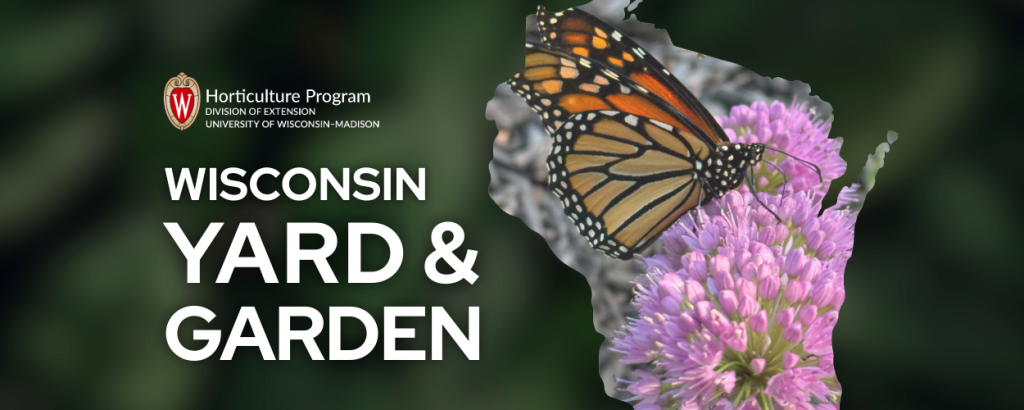
As fall arrives, summerlike warmth has prevailed in recent days across Wisconsin. Numerous flying insects are visible enjoying the warm weather while visiting various flowers. Fall-blooming plants not only enhance our landscapes but also can provide nectar, serving as a valuable food source for a variety of insects, including migrating monarch butterflies.
Many gardeners have assisted in efforts to rebuild monarch butterfly populations by planting milkweed (Asclepias syriaca) and butterflyweed (Asclepias tuberosa). These plants attract adult monarch butterflies to lay eggs and provide food sources for emerging and developing caterpillars. Adults may lay up to five hundred eggs, with less than ten percent expected to make it to adults. One of the unique parts of monarch butterfly life cycles is in fall adults travel thousands of miles, just like many birds, to spend winter in Mexico. After overwintering, they migrate back to Wisconsin to lay eggs and repeat the life cycle.
In addition to providing plants for egg laying and rearing caterpillars, gardeners across Wisconsin can further assist monarch butterflies by adding fall-blooming plants to landscapes and gardens. Nectar of flowers provides food (energy) for monarchs as they prepare for their long journey ahead. In addition, nectar is also valuable for many pollinators, including bees and other beneficial insects active in fall.
Careful plant selection not only benefits pollinators but also extends another season of color to landscapes. Most species blooming in fall need full-sun locations to grow best, and monarchs are readily attracted to flowers growing in the warmth of the sun. Plants in the aster family (Asteraceae) are viewed as ideal nectar producers blooming in late summer and early fall. Popular choices for fall-blooming plants include several aster species (Symphyotrichum spp.), black-eyed Susan (Rudbeckia hirta), and purple coneflower (Echinacea purpurea).
There are many other popular landscape perennials that also can serve as early fall nectar sources. Sedum ‘Autumn Joy,’ blazing star (Liatris spp.), and cardinal flower (Lobelia cardinalis) are all excellent choices, as are numerous goldenrods (Solidago spp.). Annuals that have been blooming all summer can also attract pollinators, including zinnias, Mexican sunflower (Tithonia rotundifolia), and traditional garden sunflowers still in bloom, among others.
As is always the case, do some research on these and other nectar-producing plants to ensure they are a good fit for the specific site to be planted. All perennials listed here would be hardy across Wisconsin but always check winter hardiness for perennial plants. Some plants will like moist soil, others more dry soil conditions. Finally, consider how features such as flower color, plant size, and growth habit fit the overall existing landscape.

About the Author
Bruce Spangenberg is a Horticulture Outreach Specialist with UW-Madison Division of Extension. Get answers to your lawn, landscape and garden questions anytime at “Ask Your Gardening Question.”




